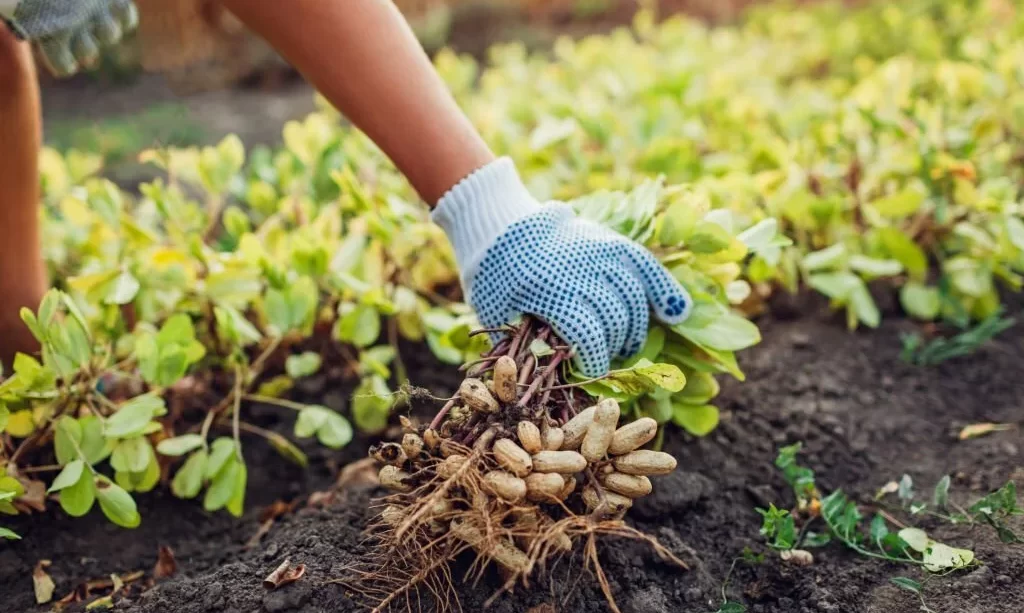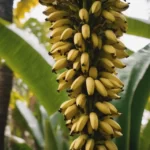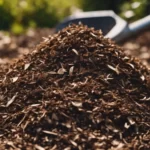The peanut plant, Arachis hypogaea, is a unique member of the legume family, notable for its fascinating growth process and significant agricultural value. Unlike many other nut-producing plants, peanuts develop underground, making their growth cycle particularly interesting.
Description of Peanut Plant Growth Stages
Understanding the peanut plant’s life cycle is key to appreciating its distinctive characteristics. The growth of a peanut plant can be divided into several stages:
- Germination: The peanut plant begins its life cycle when the seed germinates. Initially, it forms a simple shoot that emerges above the soil.
- Vegetative Stage: As the plant grows, it develops long, slender stems and leaves. The leaves are typically composed of four leaflets, each oval-shaped and a vibrant green color.
- Flowering: The peanut plant produces small, yellow flowers. These flowers are self-pollinating, and after pollination, they undergo a unique process known as “pegging.”
- Pegging: In the pegging stage, the flower stalk elongates and grows downward into the soil. This is where the peanut pods will eventually develop.
Each of these stages plays a crucial role in the development of the peanuts, and the plant’s appearance during these stages is indicative of its health and progress.
Peanut Plant Leaves and Stems
The leaves and stems of the peanut plant are key identifiers:
- Leaves: Peanut leaves are pinnately compound, typically featuring four leaflets. Each leaflet is oval, with smooth edges and a pointed tip. The leaves are bright green, providing a stark contrast to the soil they grow in.
- Stems: The stems of a peanut plant are typically slender and flexible. They can grow to be several feet long and tend to sprawl along the ground, though some varieties may grow more upright.
The structure of the leaves and stems contributes not only to the plant’s ability to photosynthesize efficiently but also to its distinctive appearance in the field.
Peanut Flowers and Pegging Process
One of the most distinctive features of the peanut plant is its flowering and pegging process.
- Peanut Flowers: The flowers of the peanut plant are small and typically yellow. They have a unique bell-like shape and usually appear in the axils of the leaves. These flowers are often bright and conspicuous, adding a touch of beauty to the plant.
- Pegging Process: After pollination, the peanut flower undergoes a remarkable transformation. The fertilized flower begins to form a peg, which is an elongated stem that grows downward, guiding the developing peanut into the soil. This is a critical phase as the peanut pods will form and mature underground.
Understanding this unusual reproductive process is crucial for those growing or studying peanuts, as it is essential for the successful development of the peanut pods.
Peanut Pods and Roots
Below the surface, the peanut plant develops its most valuable part – the peanut pods.
- Peanut Pods: The pods are typically oblong and can contain one to four peanuts each. They have a rough, netted texture and a beigish color when mature. The pods grow underground, which is a unique aspect of peanut cultivation.
- Root System: The peanut plant has a fibrous root system. It’s also known for its nitrogen-fixing capabilities, thanks to nodules on its roots that host beneficial bacteria. This not only helps the plant itself but also enriches the soil.
The development of the pods and the health of the root system are directly linked to the overall yield of the peanut plant. Therefore, understanding and managing the conditions underground is as important as tending to the visible part of the plant.
Growing Conditions and Habitats
The habitat and growing conditions of a peanut plant greatly influence its growth and development.
- Climate Preferences: Peanuts thrive in warm climates with well-drained soil. They typically require a long growing season and plenty of sunlight.
- Soil Requirements: Light, sandy loam soils are ideal for peanut cultivation. The soil needs to be loose and well-draining to accommodate the growth of peanut pods underground.
- Common Regions: Peanuts are commonly grown in regions with warm climates, such as the southern United States, parts of Africa, and Asia. The specific characteristics of peanut plants can vary slightly depending on the regional conditions.
For gardeners and farmers, understanding these environmental preferences is key to successful peanut cultivation, ensuring healthy growth and optimal yields.
Common Varieties of Peanut Plants
Peanut plants come in several varieties, each with distinct characteristics:
- Runner Peanuts: Known for their uniform kernel size, these are commonly used for peanut butter production. Runners typically have a sprawling growth habit and produce a high yield.
- Virginia Peanuts: These are the largest types, often roasted and sold in-shell. They have a more upright growth and produce fewer but larger pods.
- Spanish Peanuts: Recognized for their smaller size and reddish-brown skin, Spanish peanuts are often used in candy and peanut oil production. These plants are bushier with smaller leaves.
- Valencia Peanuts: Characterized by their sweet flavor and typically three or more kernels per pod, Valencia peanuts are often roasted or boiled. These plants have bright green foliage and are more drought-resistant.
Understanding these varieties helps in choosing the right type for cultivation based on the intended use and growing conditions.
Conclusion
The peanut plant, with its unique growth pattern, interesting flowers, and subterranean pods, is a fascinating subject for gardeners and agricultural enthusiasts. From its sprawling stems and vibrant leaves to its distinctive pegging process and nitrogen-fixing roots, every part of the peanut plant plays a crucial role in its development and the production of peanuts. Recognizing the various aspects of this plant is not only key to its successful cultivation but also a testament to the ingenious adaptations of nature. Whether you are a seasoned farmer or a curious gardener, growing peanuts can be a rewarding experience, offering both agricultural benefits and a deeper appreciation for plant biology.



